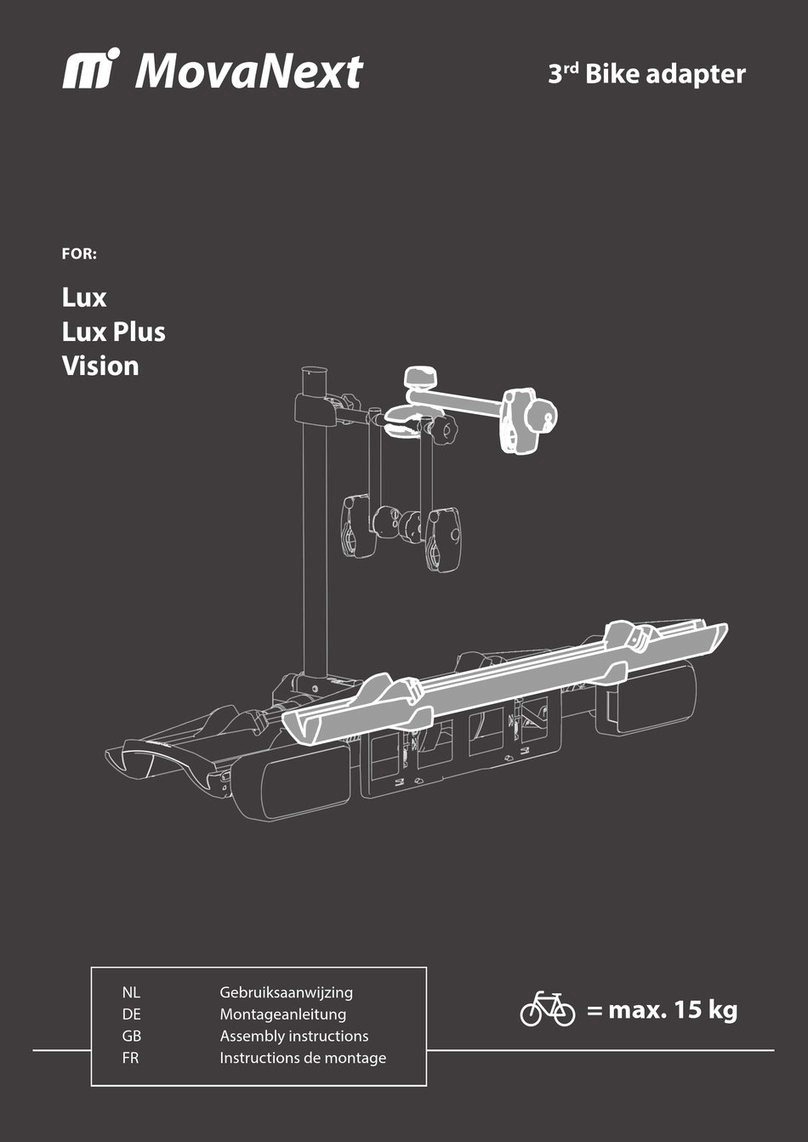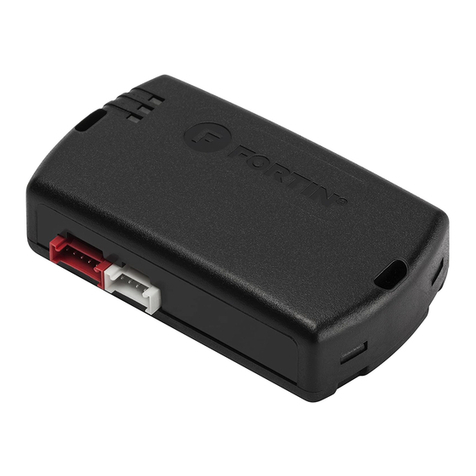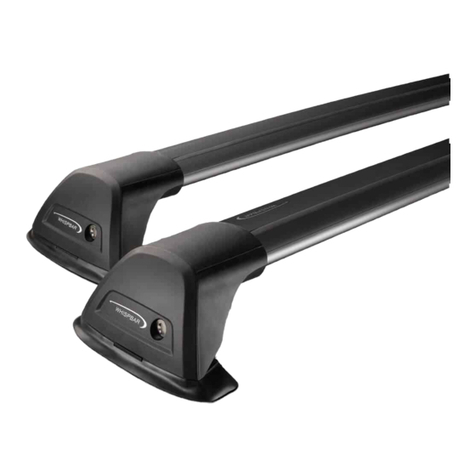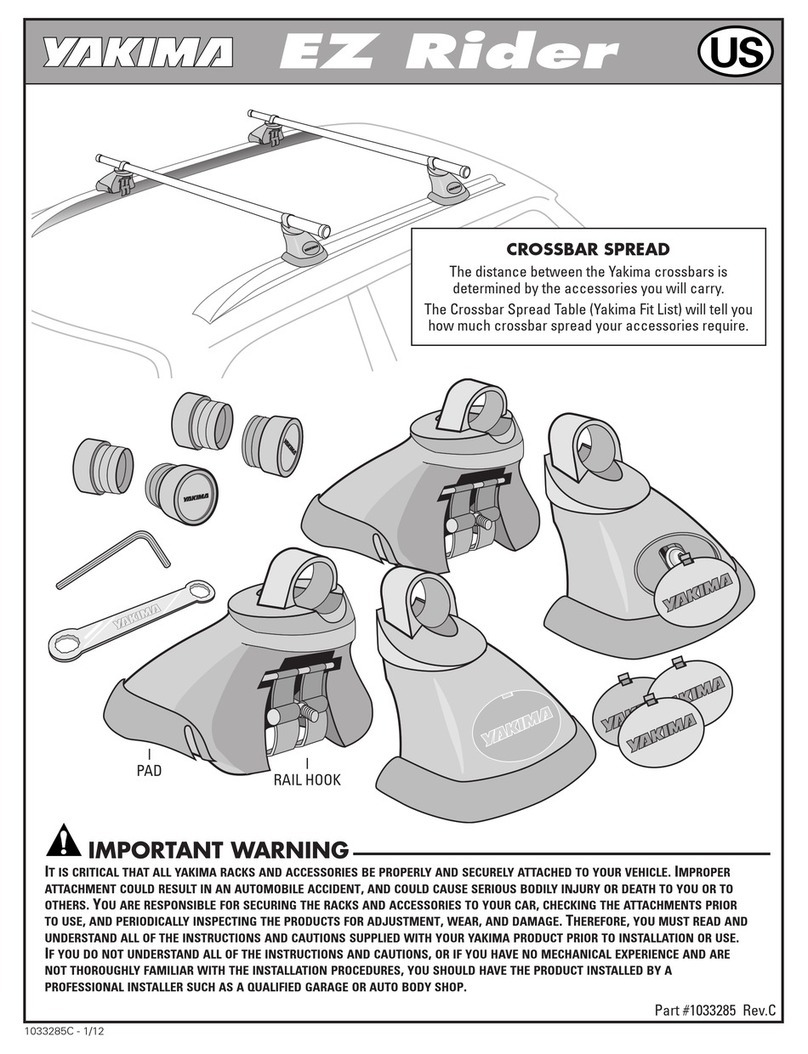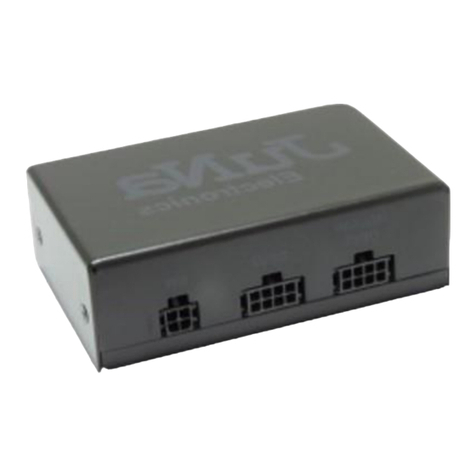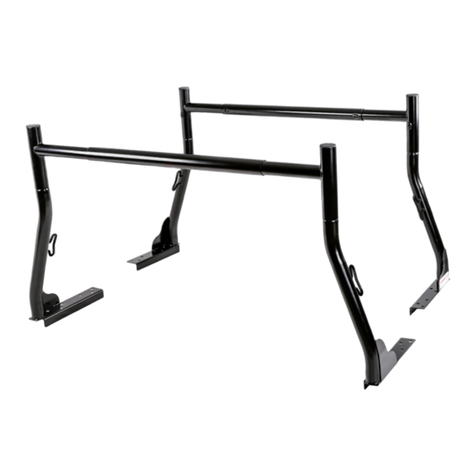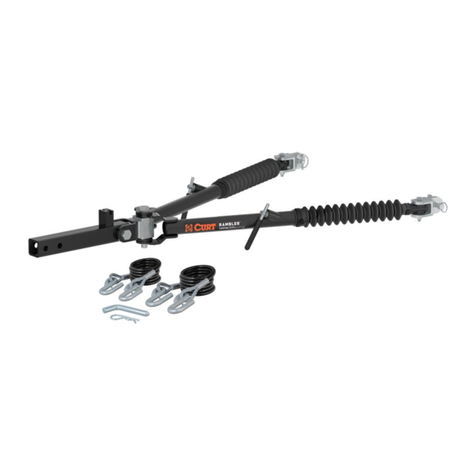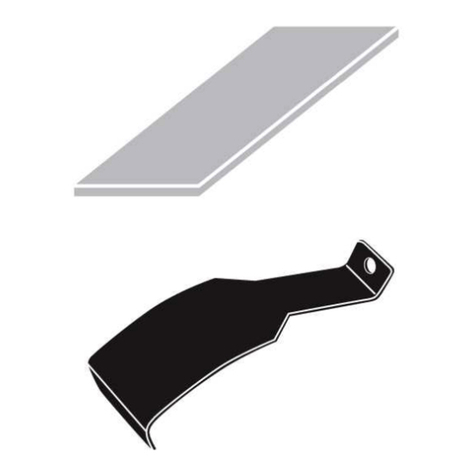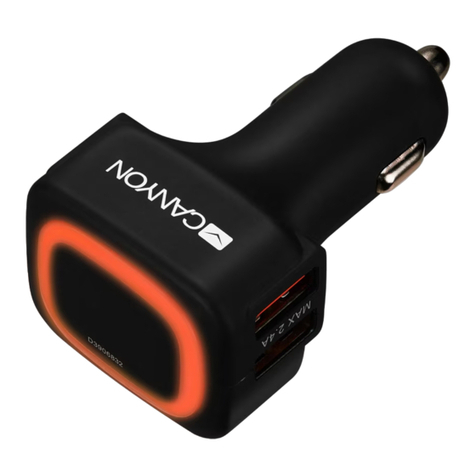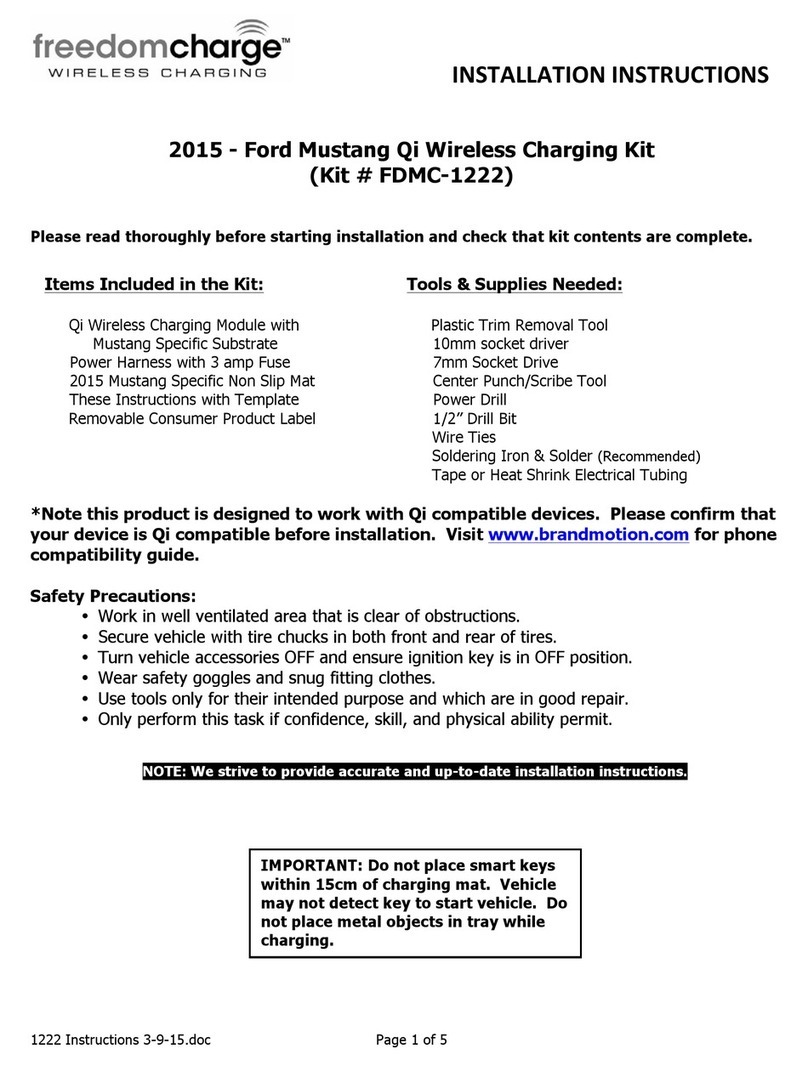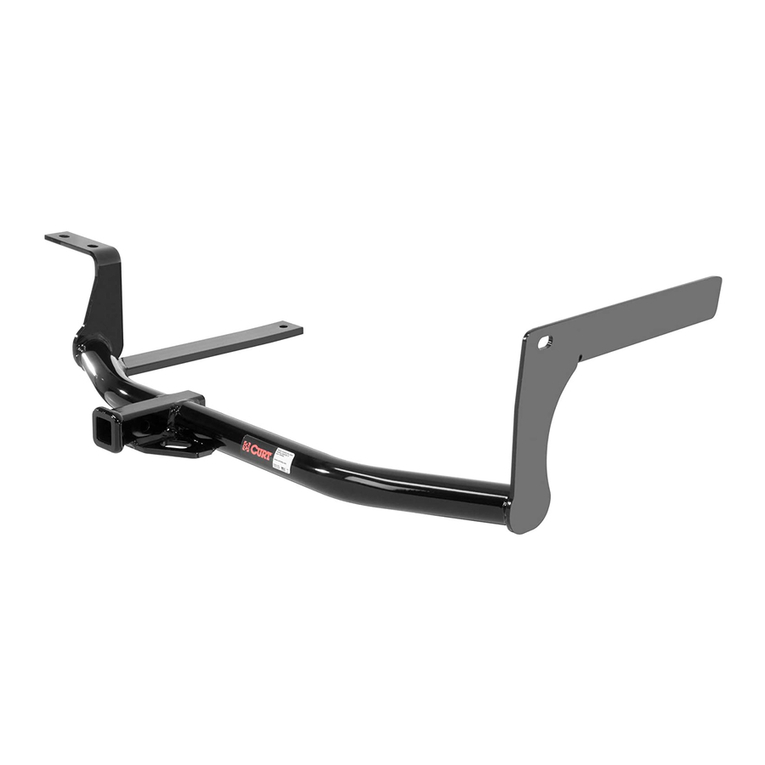MovaNext Lux Plus User manual

MovaNex t
MovaNext
Lux Plus
Owners manual
1 year extended warranty (p. 25)

M ova N ex t
M ova N ex t
2
3
M ova N ex t
M ova N ex t
2
3
Note: These are points you must bear in mind while using the
bicycle carrier. You then avoid damage and unsafe situations.
Introduction
Tip: Information to use the MovaNext safer and easier.
Symbols in this manual
Congratulations on the purchase of your MovaNext bike carrier!
This manual contains important user information with tips and warnings
about correct and safe use of the product. So read this manual carefully
before using the product.
Your bike carrier is ready for use and set for a standard tow bar with a
neck thickness of 28 mm and a tow ball with a diameter of 50 mm.
We wish you lots of pleasure while using the MovaNext!
The MovaNext bicycle carrier has EU type approval granted by the RDW.
EN
M ova N ex t
2
M ova N ex t 3

M ova N ex t
M ova N ex t
4
5
M ova N ex t
M ova N ex t
4
5
Contents 1 Your MovaNext
This manual explains the use of the MovaNext Lux Plus bicycle carrier.
Lux Plus
Equipped with tilting mechanism
Lighting: lament bulbs
EN
1 Your MovaNext 5
2 Components 6
3 Points for consideration 7
4 Tips 10
5 Fitting the bicycle carrier 11
6 Mounting the bicycle(s) 13
7 Tilting the bicycle carrier 16
8 Using the ramp 17
9 Dismounting the bicycle(s) 18
10 Dismounting the bicycle carrier 20
11 Maintenance and replacement 22
11 Adjustment on a tow bar 22
13 Bicycle transport and the law 24
14 Guarantee conditions 25
M ova N ex t
4
M ova N ex t 5

M ova N ex t
M ova N ex t
6
7
M ova N ex t
M ova N ex t
6
7
This section explains the parts of the MovaNext bicycle carrier. The
pictures show the Lux Plus. More information and instruction lms can be
found at www.movanext.com
2 Components
MovaNext Lux Plus
3 Points for consideration
Use the parts list in section 2 to check that all necessary parts of
the carrier have been supplied. Check that all parts are intact and in
working order.
If a part is missing or not in working order it must be replaced to
ensure the safety of your bicycle carrier. In such a case contact your
supplier. For information about ordering parts see
www.movanext.com
The bicycle carrier may only be used to transport a maximum of two
bicycles.
The bicycle carrier can carry a maximum load of 60 kg. The weight
of the Lux and Vision is 15.5 kg. Make sure that the maximum trailer
nose weight of the tow bar is not exceeded.
The table mentions the maximum permitted weight for one or two
bicycles on the bicycle carrier in combination with a specic permitted
trailer nose weight. The difference between the permitted trailer nose
weight and the maximum weight on the bicycle carrier is 15.5 kg,
being the weight of the carrier itself.
1.
2.
3.
4.
MovaNext Lux Plus
Permitted
trailer nose
weight
Carrier weight Maximum
weight
2 bicycles
Maximum
weight
1 bicycle
50 kg 15.5 kg 34.5 kg 30 kg
60 kg 15.5 kg 44.5 kg 30 kg
70 kg 15.5 kg 54.5 kg 30 kg
75 kg 15.5 kg 59.5 kg 30 kg
80 kg of meer 15.5 kg 60 kg 30 kg
EN
M ova N ex t
6
M ova N ex t 7

M ova N ex t
M ova N ex t
8
9
M ova N ex t
M ova N ex t
8
9
Always t the wheel clamps on the wheels of a bicycle using the wheel
straps. These wheel straps x the bicycle to the carrier and the wheels
cannot move out of the wheel rail while driving.
On longer journeys or if driving over poor or unhardened surfaces
regularly (every 2-3 hours) check the fastening of the bicycles and
carrier.
Before you drive off always check that the bicycle carrier lights are
working. Driving with a bicycle carrier with the lights not working is an
offence. The driver of the car is responsible for this.
Child’s seats, water bottles, etc. must be removed from the bicycle.
These items can come loose while driving. It is recommended to also
remove bicycle bags from the bicycle.
If the carrier is not mounted on the tow bar, always place the tow bar
plug in its holder. This is to prevent damage.
The bicycle carrier can be locked to prevent theft and inadvertent
unlocking. So always use these locks when you are on the way with
the MovaNext.
When tting and removing the bicycle carrier make sure that you rst
unlock the lock. You then avoid damage to the carrier.
To extend the life of the bicycle carrier it is important to store the
carrier in a dry place and maintain it properly (see section 11:
Maintenance and replacement).
If you have had an accident with your vehicle while the bicycle carrier
was assembled, you must have the carrier checked for damage by the
dealer. You must also check the carrier after swerving or after driving
on a poor surface for any length of time.
No changes of any nature may be made to the carrier. Using non-
original replacement parts and the use of bungee cords is also not
allowed.
5.
6.
7.
8.
9.
10.
11.
12.
13.
14.
The bicycle carrier is unsuitable for driving on unsurfaced roads and
driving at speeds higher than 130 kph.
The bicycle carrier is only suitable for standard two-wheeled bicycles.
Tandems or three-wheelers may not be transported on the bicycle
carrier.
Take care when mounting a bicycle with a carbon frame. Fixing too
rmly can cause damage to these bicycles. The manufacturer accepts
no liability for damage to carbon frames.
When the foot pedal is pressed, the bike(s) must be holded with two
hands rmly (see Chapter 7: Tilting the carrier).
When the bike made an uncontrolled freefall after (improper) use of
the foot pedal, you have bicycle carrier inspected for damage at your
dealer.
15.
16.
17.
18.
19.
EN
M ova N ex t
8
M ova N ex t 9

M ova N ex t
M ova N ex t
10
11
M ova N ex t
M ova N ex t
10
11
Preferably t the frame clamps as high as possible on the saddle or
frame tube of the bicycle for maximum stability.
When storing, place the bicycle carrier upright with the grip facing
upwards. You then avoid damage to the carrier.
The total length of the vehicle increases when the bicycle carrier is
assembled. The height and width can also increase. Remember this
when reversing, parking, etc.
Remove the bicycle carrier from the tow bar before you drive into a car
wash.
To save fuel, it is advisable to not assemble the bicycle carrier on the
tow bar when no bicycles are being transported.
If your vehicle has a boot lid that automatically opens it is advised to
switch this function off. You then avoid damage to the bicycle carrier
and your vehicle.
Go to www.movanext.com for accessories and more information on
how to use the bicycle carrier in a more simple way.
The 13-pole plug socket works with a bayonet catch so the plug
turns a quarter turn and is rmly xed. Should the plug not t in the
connection on your car check if:
• the notch in the plug matches the recess in the socket on the car
(see gure).
• the 3 slots in the plug are correctly positioned for the notch in the
socket (see gure).
• the pins are correctly positioned
for the notch (see gure).
1.
2.
3.
4.
5.
6.
7.
8.
4 Tips 5 Fitting the bicycle carrier
1. Assembling the bicycle carrier on the
tow bar
Make sure that the tow ball is not dirty or greasy.
Fit the bicycle carrier slightly tilted towards you on
the towbar then bring it upright.
4. Open the clip
The two wings are kept together with a clip. Open
the clip to unfold the wings.
2. Push the handle down
Push the handle down until it is in a horizontal
position. Keep the central tube as vertical as
possible. When the handle has been rotated to
maximum, you will hear a “click” and the carrier will
x itself automatically.
3. Close the lock
With the key you can lock the xation on the
towbar. With this you be sure that the xation
cannot release. Turn the key to close the lock and
take the key with you. In this way you reduce the
chance on thievery.
EN
M ova N ex t
10
M ova N ex t 11

M ova N ex t
M ova N ex t
12
13
M ova N ex t
M ova N ex t
12
13
5. Unfold the right wing
Unfold the right wing until it stays in a horizontal
position.
6. Connect the plug
Take the plug out of the socket and plug it into
socket from your car. The plug has a 7- and a 13-
poled side. Cover the side who is not in use with
the supplied cap.
7. Unfold the left wing
Unfold the left wing until it stays in a horizontal
position. Check if the central tube is still straight up
(vertical).
6 Mounting the bicycle(s)
1. Wheel straps
Insert the wheel straps in their holders in order to
place them along the rails and do not impede the
placing of the bicycle.
2. Fold the frame clamps upwards
Folding the frame clamps upwards makes placing
the bicycle(s) easier. First loosen the locking
button to do this.
This can be particularly useful when using a
ramp (see section 8).
3. Place the bicycle in front of the bicycle
carrier
Place the rst (lady‘s) bicycle in front of the carrier
with the chain guard facing the car. Then squeeze
both brakes and lift the front wheel into the rail.
4. Place the bicycle in the wheel rail
Lift the rear wheel into the wheel rail. One hand
remains on the handlebars.
You can also use a ramp to put the bicycle(s)
on the MovaNext.
8. Check the bicycle carrier
Check that the carrier stays straight by alternately
pressing the wings. Check the clamping force by
pulling a wing towards you.
See section 12 if the carrier is not straight or
if clamping is not sufcient.
EN
M ova N ex t
12
M ova N ex t 13

M ova N ex t
M ova N ex t
14
15
M ova N ex t
M ova N ex t
14
15
6. Bring the frame clamps to height
Loosen the height adjustment knob. Adjust the arm
to the correct height. Then tighten the knob again
nger-tight.
7. Fix the fame clamps
Loosen the frame clamp and preferably position
it as high as possible on the saddle tube. Turn it
nger-tight.
Never turn the lock knob fully out of the
screw thread.
8. Lock the frame clamps
Door gebruik te maken van de sloten in de
slotknoppen beschermt u de etsen tegen diefstal.
After locking remove the key from the lock.
5. Lift into the back wheel rails
Lift the bicycle from the front wheel rails into the
rear wheel rails.
Make sure that the bicycles are in the middle
of the carrier.
9. Move the wheel rails
Slide both wheel clamps as close as possible to
the wheels and fasten the wheel straps: insert the
wheel straps through their openings and tighten
them.
Check whether:
• the height adjustment knob, lock knob and
frame clamps are tightened nger-tight.
• the wheel straps are pulled tight.
• the keys have been removed from the knobs.
11. Check fastening points
10. Place a second bicycle
Repeat steps 1 to 9 for the second bicycle.
Always place a second bicycle in the
opposite direction to the rst bicycle.
The bicycle carrier must be xed upright on
the tow bar. You can check this by looking
from the side to see if the central tube is
vertical.
12. Check the position of the carrier
EN
M ova N ex t
14
M ova N ex t 15

M ova N ex t
M ova N ex t
16
17
M ova N ex t
M ova N ex t
16
17
8 Using the ramp
1. Assembly
The ramp consists of two parts. Connect the two
parts to each other by inserting the pin of the one
part in the hole in the other.
3. Ride the bicycle onto the carrier
Now ride the bicycle onto the carrier. Always keep
at least one hand on the handlebars.
Fold the frame clamps downwards when the
bicycle is on the bicycle carrier. Before securing
the bicycles check from step 6 in section 6.
4. Storing the ramp
The two parts of the ramp can be placed inside
one another for easy storage. The hook on the one
part ts in an opening in the other part.
2. Place the ramp against the carrier
Place the ramp alongside the carrier. The hook at
the end of the ramp must t in the wheel rail as
shown in the gure.
Fold the frame clamps upwards to ease the
placing of the bicycle.
1. Tilting downwards
Take the biciycle tightly with 2 hands and press
with your feet the pedal down. Always tilt the
carrier in a controlled way.
2. Tilting upwards
Take the bicycle tightly with 2 hands and til the
carrier upwards. When the carrier is in the right
position, you will hear a “click” sound and the
carrier is xed.
7 Tilting the bicycle carrier
Hold the carrier always tightly with 2 hands.
When the carrier is xed you can see
a green coloured indication.
3. Control the stability
Control if the carrier is locked by till the carrier
to you.
EN
M ova N ex t
16
M ova N ex t 17

M ova N ex t
M ova N ex t
18
19
M ova N ex t
M ova N ex t
18
19
7. Remove the second bicycle
Lift the bicycle from the bicycle carrier.
6. Loosen the second frame clamp
Loosen the frame clamp from the bicycle to be
removed and take it from the saddle tube.
Hold the bicycle while you loosen the clamp
so the bicycle cannot fall.
5. Loosen the other wheel straps
Loosen the wheel straps of a second bicycle by
pressing the blue knob and pulling the straps out.
9 Dismounting the bicycle(s)
2. Loosen the wheel straps
Loosen the wheel straps of the bicycle to be
removed by pressing the blue knob and pulling the
straps out.
Only one bicycle at a time can be lifted
from the carrier. Only loosen the belts and
frame clamp of the bicycle you are going to
remove.
1. One bicycle at a time
3. Loosen the frame clamp
Loosen the frame clamp from the bicycle to be
removed and take it from the saddle tube.
Hold the bicycle while you loosen the clamp
so the bicycle cannot fall.
4. Remove the bicycle
Lift the bicycle from the bicycle carrier.
You can also do this per wheel as described
in step 3 in section 6. “Mounting bicycle(s)”
EN
M ova N ex t
18
M ova N ex t 19

M ova N ex t
M ova N ex t
20
21
M ova N ex t
M ova N ex t
20
21
5. Right-hand wing upwards
Keep the left-hand wing in the vertical position and
fold the right-hand wing upwards.
6. Fasten with the clip
Fasten the two wings using the clip.
8. Remove from the tow bar
You can now tilt the bicycle slightly towards you
and lift it from the towbar.
7. Unlock the carrier
Unlock the carrier by turning the key and opening
the lock. Pull up the handle with by pressing the
button.
The carrier is now no longer xed on the
towbar.
10 Dismounting the bicycle carrier
1. Slide the wheel clamps inwards
3. Left-hand wing upwards
Unlock the wings by sliding the slide for locking
towards the car. Now you can (at the same time)
lift the left-hand wing.
4. Remove the plug
Take the plug from the car’s plug socket and place
it in the bicycle carrier’s plug holder. Fit the cap on
the open plug part.
To easily fold the bicycle carrier up, the wheel
clamps are best slid into each other with the straps
at in their holders. (See gure).
2. Frame clamps
Hang the frame clamps straight down and tighten
the locking knob.
EN
M ova N ex t
20
M ova N ex t 21

M ova N ex t
M ova N ex t
22
23
M ova N ex t
M ova N ex t
22
23
11 Maintenance and replacement
With normal use the bicycle carrier is maintenance-free. It is however
recommended to clean the bicycle carrier and keep it in a dry space.
Cleaning the bicycle carrier requires extra attention in the winter when grit
remains can corrode hinging parts. This can for example mean folding the
wings in and out becomes stiffer and the lock can rust up. So always rinse
the bicycle carrier after use in the winter and store the bicycle carrier dry.
Defective parts must be replaced for safety reasons.
See www.movanext.com for the order numbers or ask your MovaNext
dealer.
EN
11 Adjustment on a tow bar
It is important that the bicycle carrier is and remains upright on the tow bar.
Your bicycle carrier is set by default for a tow bar with a neck thickness
of 28 mm and a tow ball measuring 50 mm. It may be the case that the
diameter of the tow ball, the thickness of the tow bar neck or the angle of
the tow bar neck are different. This can mean the bicycle carrier is less
stable or out of square on the tow bar. The steps below allow you to check
if your carrier is correctly assembled.
If the bicycle carrier is not mounted stable enough, adjust the installation
with help of the installation manual which you can download at
www.movanext.com or contact you dealer.
Check for clamping force
Test the clamping force by trying to rotate the
bicycle carrier. Do this by pulling the wing briey
towards you once. If you can easily rotate the
carrier, adjust the installation with help of the
installation manual or contact you dealer.
Check for straightness and stability
Check if the bicycle carrier is horizontal. Then
test the stability by pushing the wings downwards
one by one. If you the carrier moves,adjust the
installation with help of the installation manual or
contact you dealer.
Check for horizontal position
Check that your bicycle carrier is assembled
straight by seeing if the central tube is straight.
If the carrier is askew on the tow bar, adjust the
installation with help of the installation manual or
contact you dealer.
M ova N ex t
22
M ova N ex t 23

M ova N ex t
M ova N ex t
24
25
M ova N ex t
M ova N ex t
AAB
B
24
25
14 Guarantee conditions
When can you claim on the guarantee?
By showing the purchase note, the manufacturer provides 2 years
guarantee on Movanext bicycle carrier, based on the purchasing date
as listed on the purchase note. The warranty consists of free repair or
replacement of parts in case of material and/or construction errors. You
will receive 1 year extra warranty after registering your product on the
MovaNext website.
When can you not claim on the guarantee?
The manufacturer of the bicycle carrier is not liable for unsafe situations,
accidents or damage that are the consequence of:
Ignoring warnings or instructions as shown on the MovaNext or
included in this documentation.
Use of the carrier for other purposes or in other circumstances than
mentioned in this user manual.
If any changes are made to the carrier in any way. This includes using
non-original replacement parts and the use of (elastic) bungee cords.
Insufcient maintenance and/or incorrect use (see section 11:
maintenance and replacement).
Accidents, illegal and incompetent use of the vehicle or failures to the
vehicle on which the bicycle carrier is assembled.
Driving on unsurfaced roads.
Driving with a bicycle carrier at speeds above 130 kph.
The manufacturer is not liable for consequential damage with a fault in the
bicycle carrier such as damage to a car or bicycle.
•
•
•
•
•
•
•
13 Bicycle transport and the law
In this chapter different regulations will be explained which are
required according the law. Stick to these rules and bring yourself
and others not in danger.
This section describes different regulations set by law. You
must comply with these regulations to avoid putting yourself
and others in danger.
The maximum trailer nose weight of the tow bar may not be
exceeded (see section 3). So check the maximum trailer nose
weight for your car.
Adapt your driving speed to the trafc conditions and drive with
common sense.
There must be a white number plate on the bicycle carrier.
Different regulations often apply abroad - the protrusion of
loads at the side is often prohibited. Make sure you know the
regulations before you depart!
The distance between the end of the bicycle carrier (measured
from the light) and the side of the car may be at most 50 cm in
the Netherlands. The distance between the end of the bicycle
carrier (measured from the light) and the side of the car may
be at most 40 cm in Germany. (Distance A in the gure below).
The bicycles on the bicycle carrier may protrude no more
than 20 cm on both sides of the car. (Distance B in the gure
below).
•
•
•
•
•
•
•
EN
You will receive 1 year extra warranty after registering your product
on the MovaNext website. www.movanext.com
M ova N ex t
24
M ova N ex t 25

Producer
Indes B.V
www.indes.eu
PP-Q1102-9012B / 2014-01.00-EN - LUX PLUS
Dealer
Table of contents
Other MovaNext Automobile Accessories manuals
Popular Automobile Accessories manuals by other brands
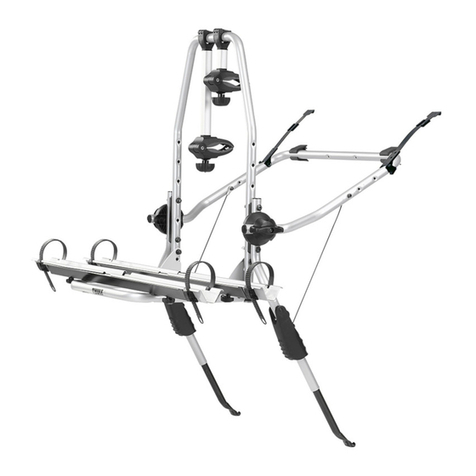
Thule
Thule clipon high 9105 Fitting instructions

Paxton Automotive
Paxton Automotive Novi Supercharger 1200 Owner's installation guide
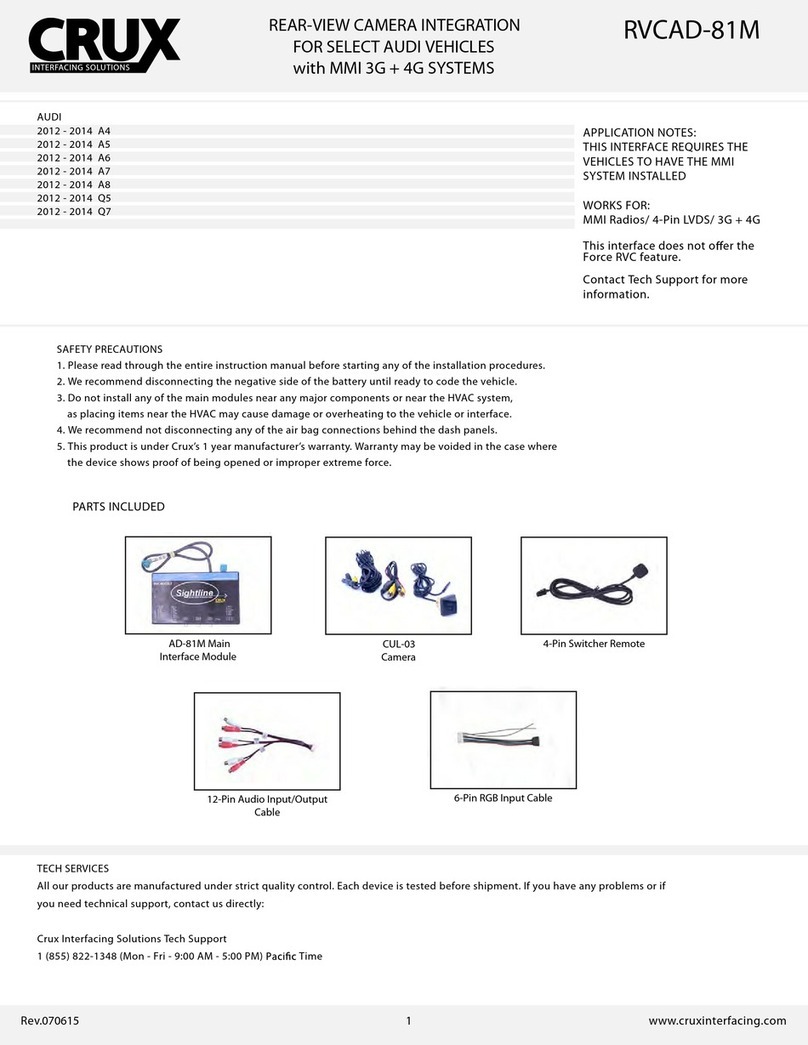
Crux
Crux RVCAD-81M Integration manual
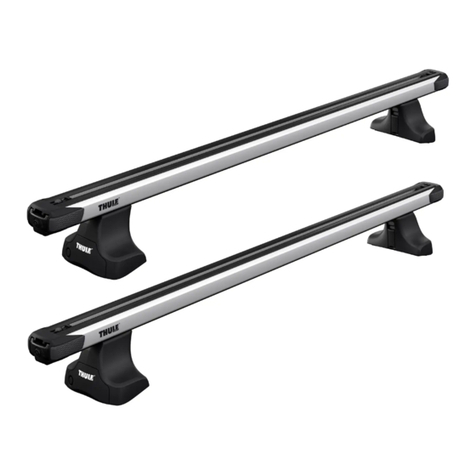
Thule
Thule 1398 Fitting instructions
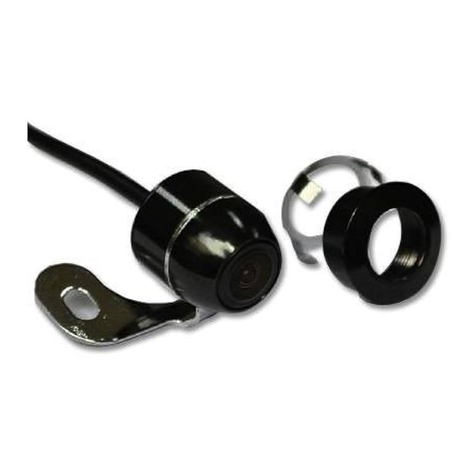
Beeper
Beeper MICRO CAMERA RX-32 manual
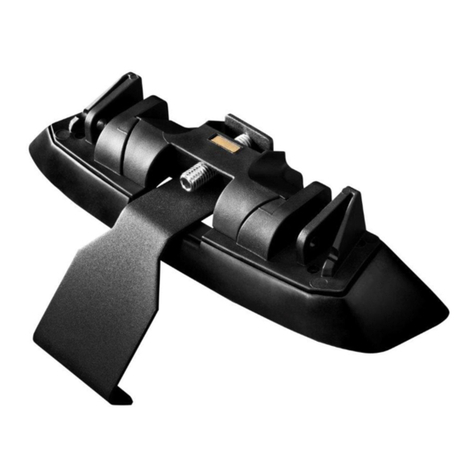
Whispbar
Whispbar K619 Fitting Instructions for Basic Carrier
